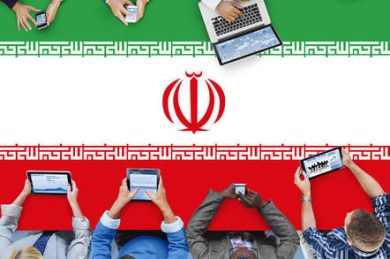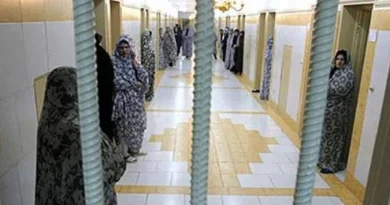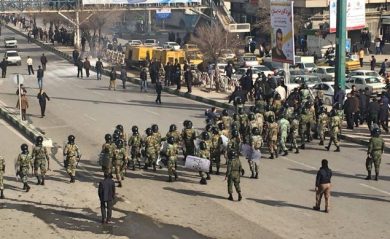The Islamic Revolutionary Guard Corps (IRGC), originally created to safeguard the 1979 Islamic Revolution within Iran, has evolved into a transnational force wielding political, military, and economic influence far beyond its borders. While presented by the Iranian regime as a protector of Islamic values and national sovereignty, the IRGC’s actual role in the region has been one of destabilization, proxy warfare, and the export of sectarian conflict.
Through its elite Quds Force, the IRGC has orchestrated and supported insurgencies, backed authoritarian regimes, enabled civil wars, and funded terrorist organizations across the Middle East, North Africa, Latin America, and even parts of Europe. This article examines the IRGC’s global footprint, its strategies for exporting chaos, and the devastating consequences of its regional ambitions.
1. The Quds Force: Iran’s Foreign Legion
The IRGC’s foreign operations are carried out by its elite unit, the Quds Force, led for decades by General Qassem Soleimani (killed by a U.S. drone strike in 2020). Its mission is to export the Islamic Revolution by building alliances with militant groups, undermining U.S. and Western influence, and extending Tehran’s reach through covert and paramilitary means.
Key Methods:
• Supporting and arming proxy militias
• Training foreign fighters
• Engaging in assassination and sabotage
• Financing terrorism and insurgency
• Political interference in weak or failed states
The Quds Force is the operational brain behind the IRGC’s extraterritorial mission—and a central player in nearly every conflict zone across the Middle East.
2. Lebanon: Hezbollah as the IRGC’s Prototype Proxy
Perhaps the IRGC’s most successful export is Hezbollah, the Iranian-backed militant and political group based in Lebanon. Established by the IRGC in the early 1980s, Hezbollah serves as both a local power broker and a strategic arm of Iranian foreign policy.
IRGC-Hezbollah Nexus:
• Direct funding and arms supply
• Joint military operations in Syria
• Intelligence and cyber coordination
• Use of Lebanon as a launchpad for attacks on Israel
Hezbollah’s presence has paralyzed Lebanon’s government, contributed to economic collapse, and turned the country into a battleground for Iranian-Israeli tensions.
3. Syria: Propping Up a Dictatorship
The IRGC’s intervention in Syria has been one of its most destructive ventures. Since 2011, the IRGC and Quds Force have provided massive support to the Assad regime in its brutal crackdown on opposition forces.
Role in Syria:
• Training and deploying thousands of foreign Shia fighters
• Providing drones, missiles, and surveillance systems
• Coordinating sieges and chemical attacks on civilian areas
• Building military bases and logistics networks across Syria
The IRGC’s actions have fueled a civil war that has killed over half a million people and displaced over 13 million.
4. Iraq: From Liberators to Occupiers
Following the 2003 U.S. invasion of Iraq, the IRGC rapidly moved to fill the power vacuum, embedding itself within Iraq’s political and security structures.
Key Activities:
• Establishing and funding Shiite militias (e.g., Kata’ib Hezbollah, Asa’ib Ahl al-Haq)
• Attacks on U.S. troops via IEDs and insurgent operations
• Influencing elections and suppressing anti-Iran protests
• Targeting Iraqi activists and journalists
The IRGC’s presence has eroded Iraqi sovereignty, fueled sectarian conflict, and undermined democratic institutions.
5. Yemen: Fueling a Humanitarian Catastrophe
In Yemen, the IRGC backs the Houthi rebels, a Shia militia group engaged in a bloody war with the internationally recognized Yemeni government and a Saudi-led coalition.
IRGC-Houthi Alliance:
• Supplying weapons, drones, and ballistic missile technology
• Training fighters and advisors
• Coordinating attacks on Saudi Arabia and UAE targets
• Smuggling oil and goods through Red Sea ports
The IRGC’s involvement has prolonged the war, worsened the humanitarian crisis, and escalated regional tensions.
6. Bahrain and the Gulf States: Covert Subversion
The IRGC has long sought to stir unrest in the Gulf monarchies, particularly targeting Bahrain, Saudi Arabia, and the UAE.
Allegations and Activities:
• Training Bahraini dissidents and militias
• Supporting cyberattacks and sabotage in the Gulf
• Plotting attacks on oil infrastructure (e.g., Aramco 2019)
• Espionage operations targeting embassies and military bases
While often conducted covertly, these actions reveal a consistent IRGC strategy of destabilizing pro-Western governments in the Gulf.
7. Gaza: Arming Hamas and Islamic Jihad
In Gaza, the IRGC provides financial and military support to Hamas and Palestinian Islamic Jihad (PIJ), both of which have launched hundreds of rocket attacks on Israel.
Forms of Support:
• Transfer of missile technology and components
• Cyber coordination and propaganda support
• Strategic advice during conflicts
• Funding tunnels, drones, and paramilitary training
By empowering militant groups in Gaza, the IRGC sustains the cycle of violence in the Israeli-Palestinian conflict while claiming ideological leadership of the resistance.
8. Afghanistan: Recruiting and Radicalizing Fighters
The IRGC’s activities in Afghanistan have included both collaboration and confrontation with the Taliban, as well as the creation of Liwa Fatemiyoun, a militia composed of Afghan Shia fighters.
IRGC’s Afghan Footprint:
• Recruiting Hazara refugees to fight in Syria
• Building intelligence networks to counter U.S. and Taliban influence
• Facilitating drug trafficking across Iran-Afghanistan border
• Offering ideological indoctrination to marginalized populations
These actions deepen Afghanistan’s instability and spread sectarian divisions.
9. Africa and Latin America: Expanding the Network
Though less publicized, the IRGC has also sought footholds in West Africa and Latin America.
Notable Examples:
• Nigeria: IRGC-linked support to the Islamic Movement of Nigeria (IMN)
• Venezuela: Military and intelligence cooperation, especially under Nicolás Maduro
• Brazil/Paraguay: Hezbollah and IRGC-linked smuggling and money laundering
• Argentina: The 1994 AMIA Jewish center bombing was attributed to IRGC-Quds Force and Hezbollah operatives
These activities are part of Iran’s broader effort to build alliances among anti-Western regimes and networks.
10. Europe: Assassination and Espionage
Even in Europe, the IRGC has conducted assassination plots and surveillance operations targeting Iranian dissidents and Jewish or Israeli organizations.
IRGC-Linked Activities:
• 2018: Foiled bombing plot against Iranian opposition rally in Paris
• 2020: Dutch expulsion of Iranian diplomats over assassination attempts
• 2022–2023: Arrests in Germany and Sweden of IRGC agents targeting journalists
The IRGC treats European soil as an extension of its battleground—undermining sovereignty, diplomacy, and safety.
11. Cyber Operations and Hybrid Warfare
Beyond traditional warfare, the IRGC engages in cyberattacks, disinformation, and psychological warfare across the globe.
Targets Include:
• U.S. and Israeli infrastructure
• Gulf oil companies and banks
• Independent media and civil society groups
• Diaspora opposition activists
Through these operations, the IRGC shapes narratives, destabilizes institutions, and extends its soft power without deploying troops.
12. Humanitarian Costs of IRGC Expansionism
The IRGC’s foreign operations have caused massive suffering:
• Over 13 million refugees and displaced persons from Syria, Iraq, and Yemen
• Tens of thousands of civilian deaths from proxy wars
• Increased sectarian violence across the Middle East
• Economic collapse in Lebanon, Yemen, and parts of Iraq
This destabilization fuels extremism, famine, disease, and the erosion of civil order—conditions the IRGC uses to justify continued intervention.
13. Financing Terror Abroad
To support its global agenda, the IRGC relies on a vast financial empire:
• Smuggling oil and weapons via ghost tankers
• Using front companies and NGOs
• Laundering money through foreign banks and cryptocurrency
• Drug trafficking through Central Asia and Latin America
This financing is critical to the IRGC’s ability to sustain its proxies and evade sanctions.
14. Why It Matters: Global Security at Risk
The IRGC is not just a regional actor—it is a global destabilizer. Its networks enable terrorism, disrupt governance, threaten trade routes, and ignite conflict.
The IRGC:
• Undermines U.S. and allied operations
• Fuels sectarian wars and political instability
• Arms groups on international terror lists
• Disrupts global energy security and freedom of navigation
Left unchecked, the IRGC threatens not only the Middle East—but global peace.
15. Holding the IRGC Accountable
To contain the IRGC’s global threat, the international community must:
• Formally designate the IRGC as a terrorist organization in all major jurisdictions
• Target IRGC-linked financial institutions and front companies
• Disrupt proxy networks through multilateral intelligence sharing
• Support civil society in IRGC-impacted countries
• Strengthen sanctions enforcement and close legal loopholes
Global coordination is essential to disrupting the IRGC’s reach and restoring regional stability.
Conclusion: Containing the Chaos
The IRGC’s reach into Lebanon, Syria, Iraq, Yemen, and beyond has left a trail of destruction, death, and division. Behind every proxy militia, failed state, or mass grave is a shadow of the IRGC’s influence.
This is not about ideology or geopolitics—it is about human lives. Every missile launched, every protester shot, every family displaced is a reminder of what the IRGC exports: chaos, repression, and terror.
Join Our Newsletter!
Stay informed with the latest updates, news, and ways to take action in the fight for justice and global security. Sign up now to get updates delivered straight to your inbox!





